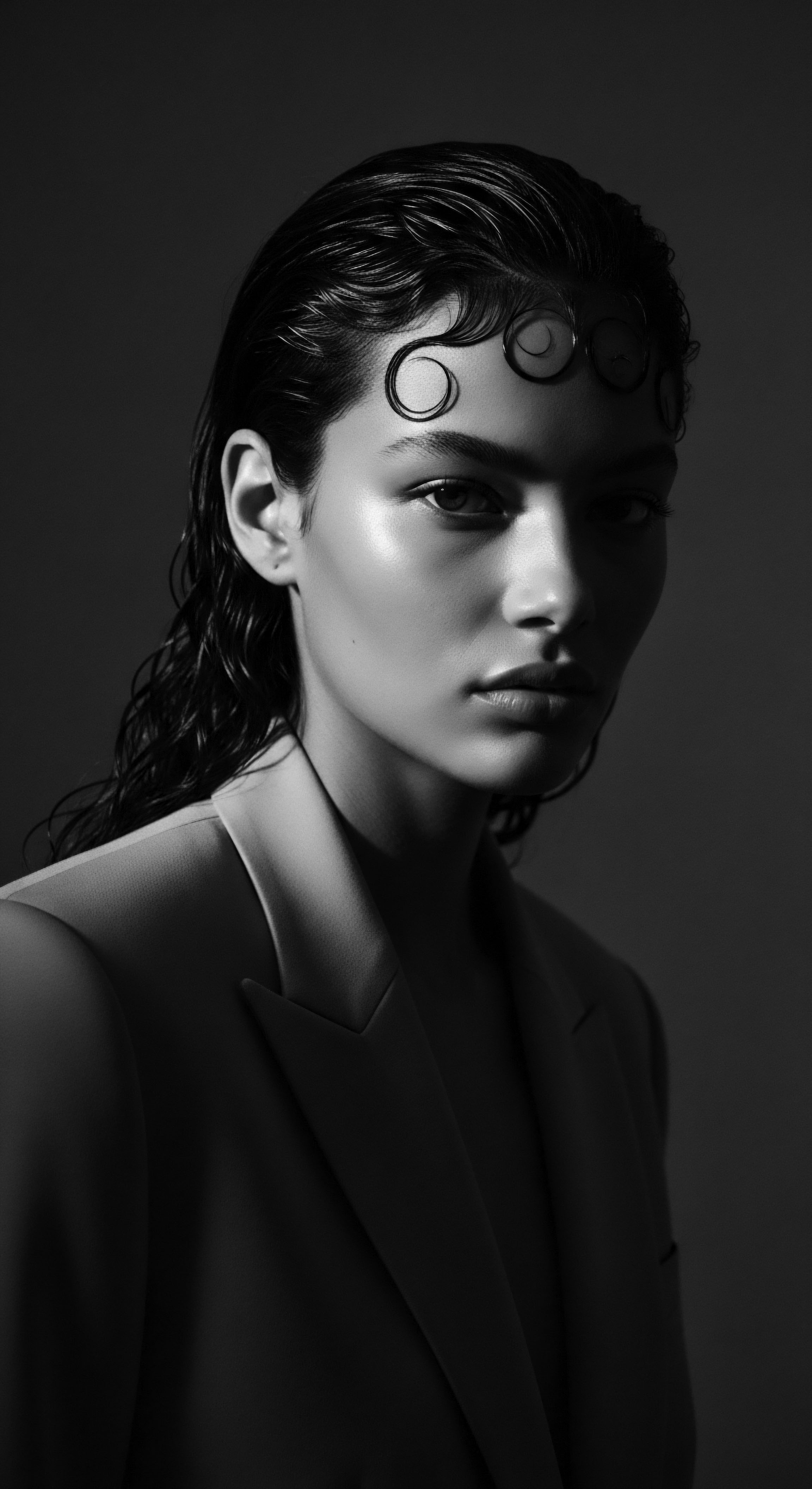
Roots
There is a whisper within each coil, each strand, a memory held in the very architecture of our hair. This isn’t merely about follicles and keratin; it speaks to something far older, a deep lineage etched into our very being. For those who carry the legacy of textured hair , this truth rings with particular resonance, for our strands are living archives, containing the wisdom of generations who understood hair not as a surface adornment, but as a biological marvel intrinsically linked to survival, community, and spirit. To understand the care methods passed down through time, we must first journey back to the source, to the fundamental biology that shaped our ancestors’ ingenious practices.
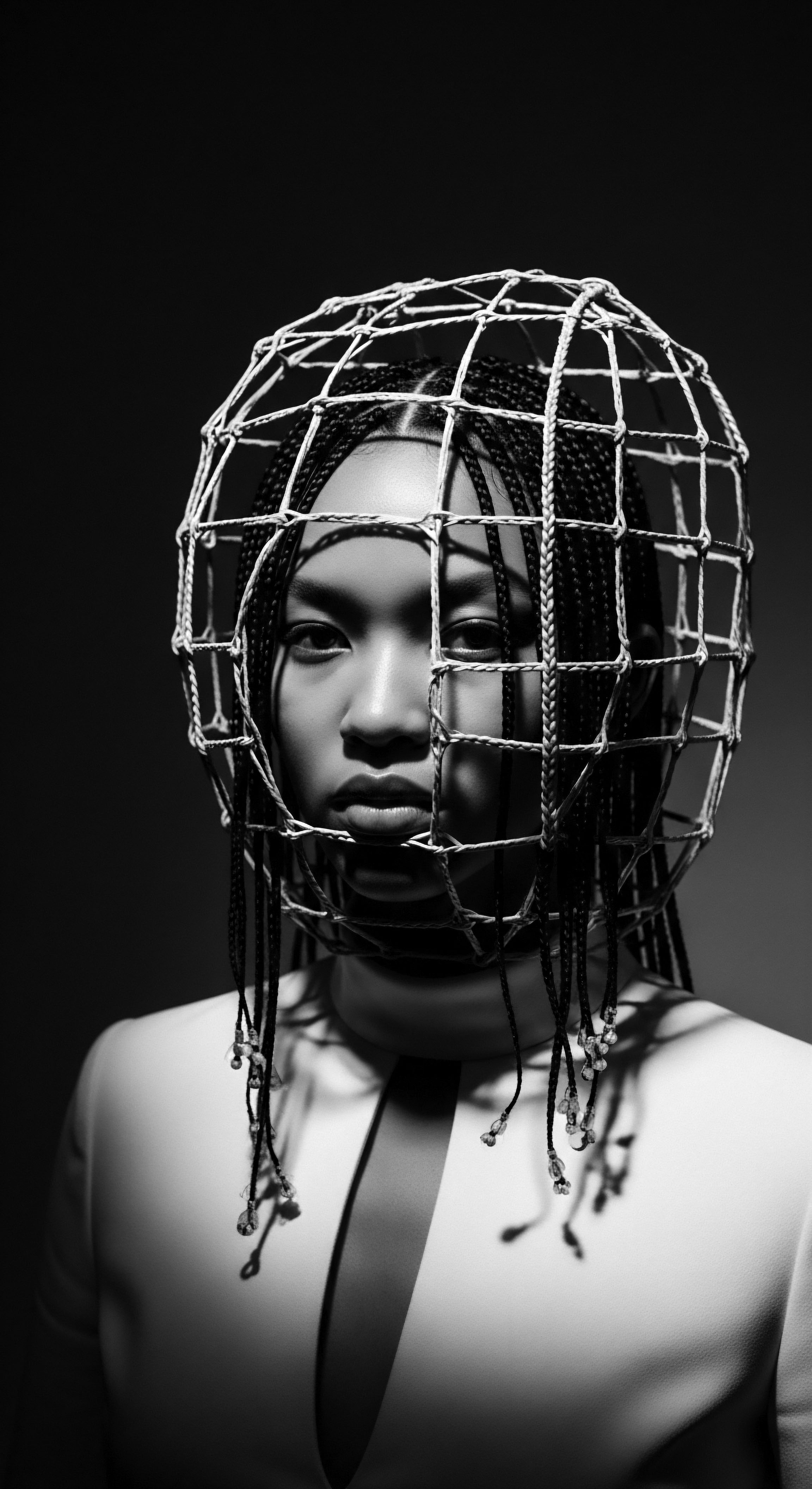
Ancestral Hair Anatomy and Physiology
The journey of textured hair care begins with its elemental structure, a structure that reveals itself in countless forms across the globe. Unlike the often cylindrical strands seen in other hair types, textured hair, especially those with tighter curls and coils, tends to possess an elliptical or flattened cross-section. This unique shape, coupled with the way keratin proteins assemble, creates the characteristic curves and bends.
The hair shaft, emerging from the follicle, twists upon itself, forming varying degrees of curl. This spiraling path means that the cuticle layers, the protective scales on the hair’s outer surface, often lie less flat than on straighter hair, leaving them more susceptible to moisture loss and external stressors.
Consider too the scalp, the nutrient-rich soil from which our hair grows. Early humans, in diverse environments, understood this connection intuitively. A healthy scalp meant healthy hair, and the biology of sebum production, the natural oils secreted by glands in the scalp, played a crucial role.
For highly textured hair, this natural oil often struggles to travel down the winding helix of the strand, leaving the ends particularly dry. Ancestral methods, therefore, often centered on how to distribute these vital oils or introduce external emollient substances to compensate for this inherent biological characteristic.
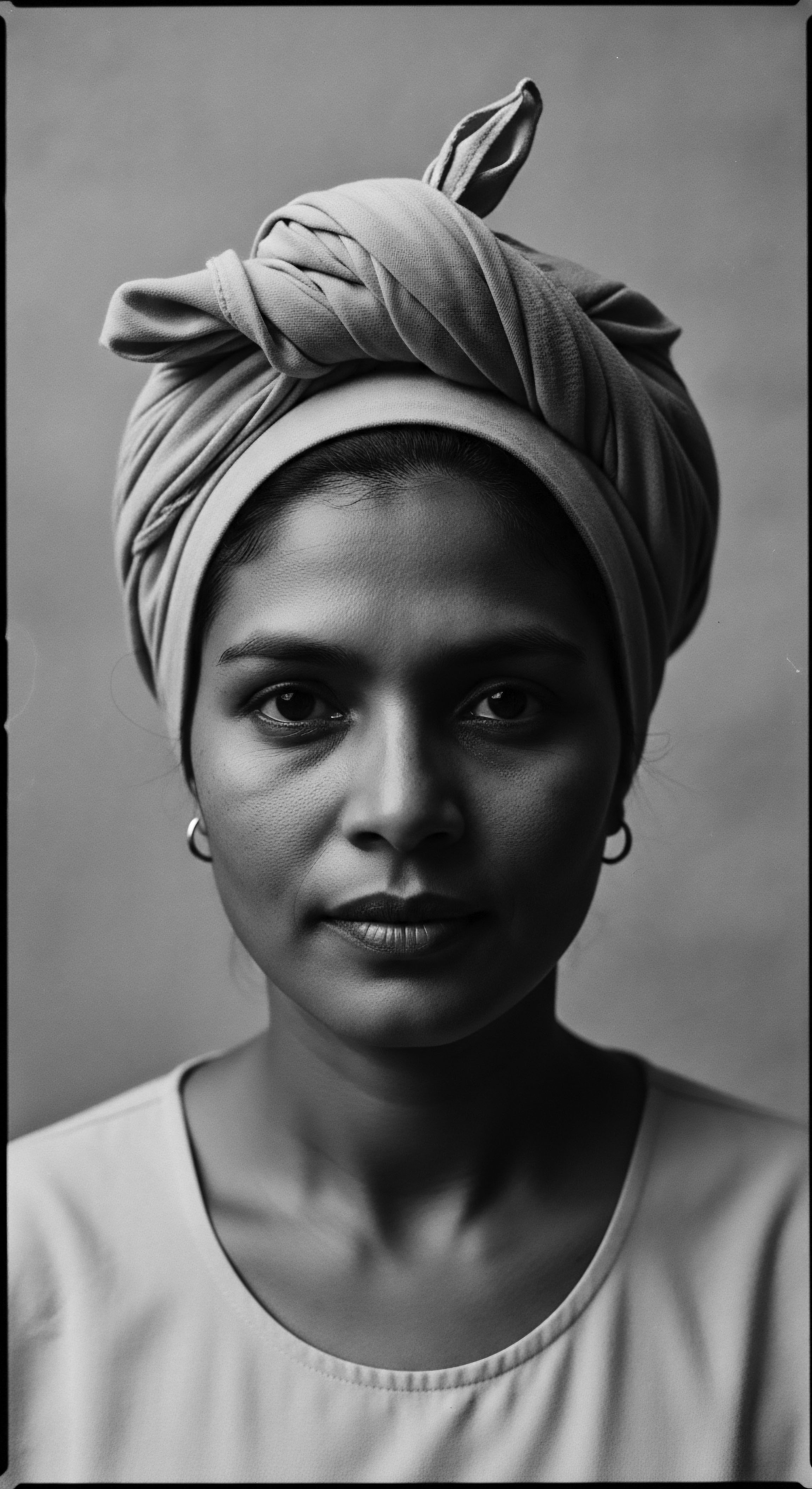
The Language of Hair Classification
While modern classifications, like the Andre Walker typing system (ranging from 1A to 4C), attempt to categorize textured hair by curl pattern, it is important to remember that these are relatively recent constructs. Historically, communities understood hair variation through a much more nuanced, lived experience, often rooted in familial resemblance, regional distinctions, and practical care needs. The idea of “type” was less about a number and more about understanding what your particular hair needed to thrive in your environment, with the resources available.
This was an intimate biological knowledge, passed down not through charts, but through touch, observation, and shared practice. Each twist and turn, each unique density, presented a unique biological challenge and, more importantly, a unique opportunity for care, leading to an astonishing variety of traditional practices.
The biological architecture of textured hair, with its elliptical cross-section and winding helix, fundamentally shaped early human care methods designed to retain moisture and protect delicate strands.

Growth Cycles and Environmental Influences
Hair growth follows distinct cycles ❉ anagen (growth), catagen (transition), and telogen (resting). While these cycles are universal, their duration and the density of hair growth could be influenced by a myriad of factors in early human existence. Nutrition, for example, played a substantial role. Diets rich in essential vitamins, minerals, and proteins, often sourced directly from the land, supported stronger hair growth and scalp health.
A deficiency, conversely, could lead to weaker, more brittle strands or even hair loss. Exposure to harsh climates—intense sun, dry winds, or cold—also placed specific biological demands on hair, necessitating protective measures.
Consider the impact of parasites, a constant biological threat in many ancient environments. Early humans devised methods not only for aesthetic purposes but also for hygiene and prevention of infestations, influencing the choice of tightly braided or coiled styles that minimized exposure and were easier to inspect and maintain. This direct link between biological vulnerability and adaptive care practices was a cornerstone of ancestral hair traditions.
| Biological Trait Elliptical Hair Follicle |
| Influence on Early Care Methods Promoted coiling and curving strands, increasing surface area for moisture loss, leading to practices focused on sealing and oil application. |
| Biological Trait Cuticle Layer Structure |
| Influence on Early Care Methods The raised cuticles of textured hair necessitated gentle handling and protective styles to minimize friction and breakage. |
| Biological Trait Sebum Distribution |
| Influence on Early Care Methods Natural oils struggled to travel down coiled strands, driving the use of external emollients and scalp massage. |
| Biological Trait Environmental Stressors |
| Influence on Early Care Methods Sun, wind, and parasites led to the development of protective styles and cleansing rituals for hygiene and resilience. |
| Biological Trait Early human hair biology was not a limitation but a blueprint, guiding the ingenuity of ancestral care practices rooted in profound environmental understanding. |
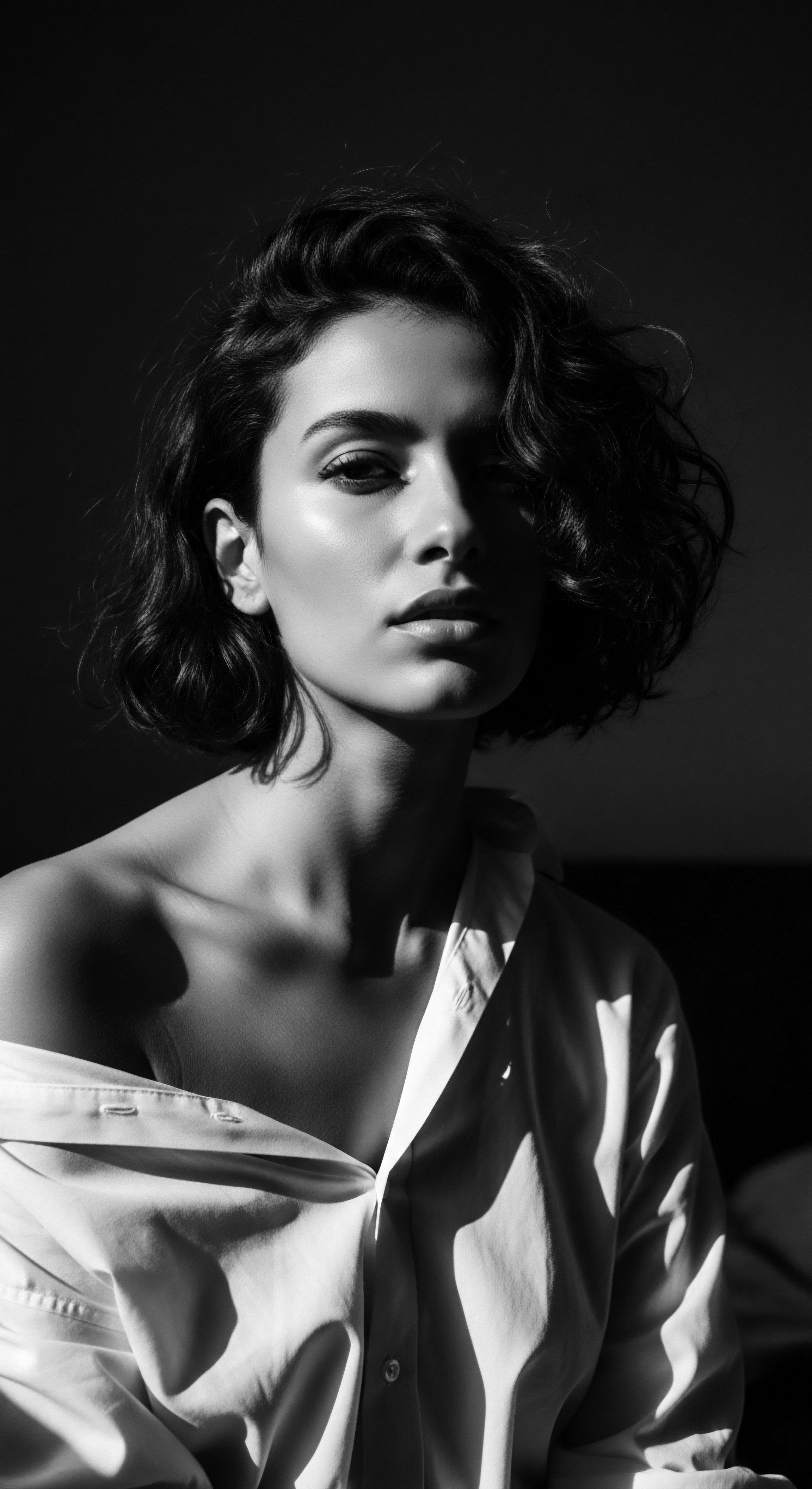
Ritual
From the foundational understanding of hair’s biological make-up, our ancestors crafted rituals—practices deeply imbued with wisdom, intention, and a sense of sacred purpose. These were not mere acts of grooming; they were ceremonies of connection, linking individuals to their lineage, their community, and the very rhythms of life. The earliest influences of hair biology on these care methods are apparent in the ways communities across the African diaspora, and indeed other Indigenous cultures with textured hair, adapted to protect, nourish, and adorn their strands.
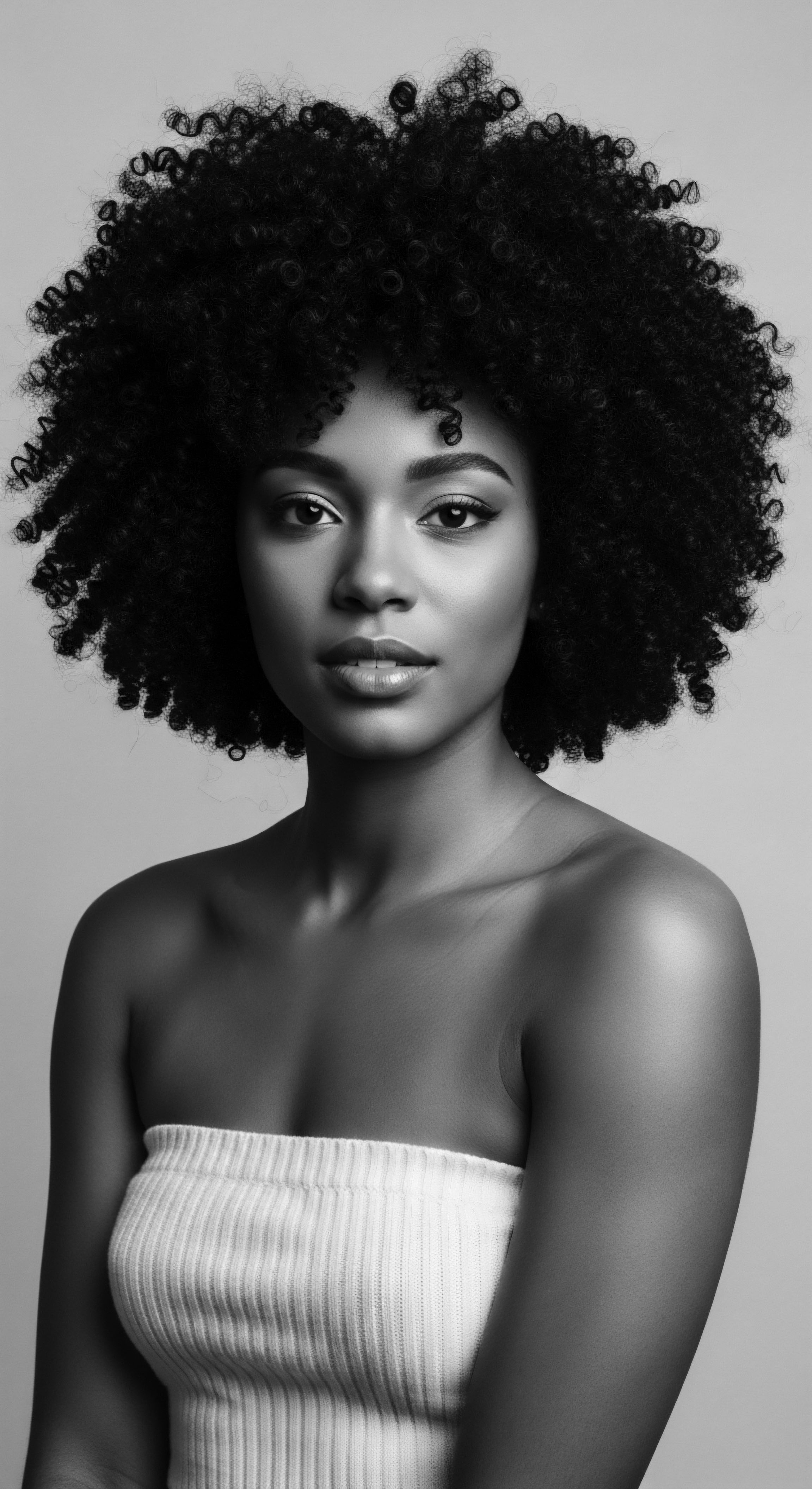
Protective Styling Ancestries
The protective styles so prevalent in modern textured hair care find their deepest roots in ancestral practices born from biological necessity. The inherent dryness of highly coiled hair and its susceptibility to breakage meant that early human care methods prioritized minimizing manipulation and exposure to harsh elements. Braiding, twisting, and coiling were not simply aesthetic choices; they were strategies for survival. These styles shielded the delicate ends of the hair, reduced tangling, and helped retain precious moisture, extending the periods between cleansing and conditioning, which was often resource-intensive.
Think of the intricate cornrows depicted in ancient Egyptian art, or the elaborate braided patterns of West African communities. These styles were not just beautiful; they were a biological shield, a testament to an understanding of hair’s vulnerability.
The very act of creating these styles was communal, often involving multiple generations. Younger members would learn the nuances of sectioning, tension, and product application—a balm from specific plants, a nourishing oil—passed down through tactile teaching. This hands-on learning reinforced the understanding of how each strand behaved, how much moisture it needed, and how best to secure it for longevity and protection.

Honoring Natural Definition
Beyond protective styles, early care methods also celebrated and enhanced hair’s natural texture. Techniques that promoted coil definition, such as finger coiling or applying plant-based gels, were likely used to manage hair, reduce frizz, and create a more uniform appearance. The biology of the hair strand—its natural inclination to clump and coil—was observed and worked with, not against.
For instance, the use of mucilaginous plants, like aloe vera or okra, to smooth and define curls, speaks to an intuitive grasp of how these natural polymers could interact with the hair’s protein structure to reduce frizz and provide hold. These methods underscore a reverence for hair in its original state, recognizing its inherent beauty and form.
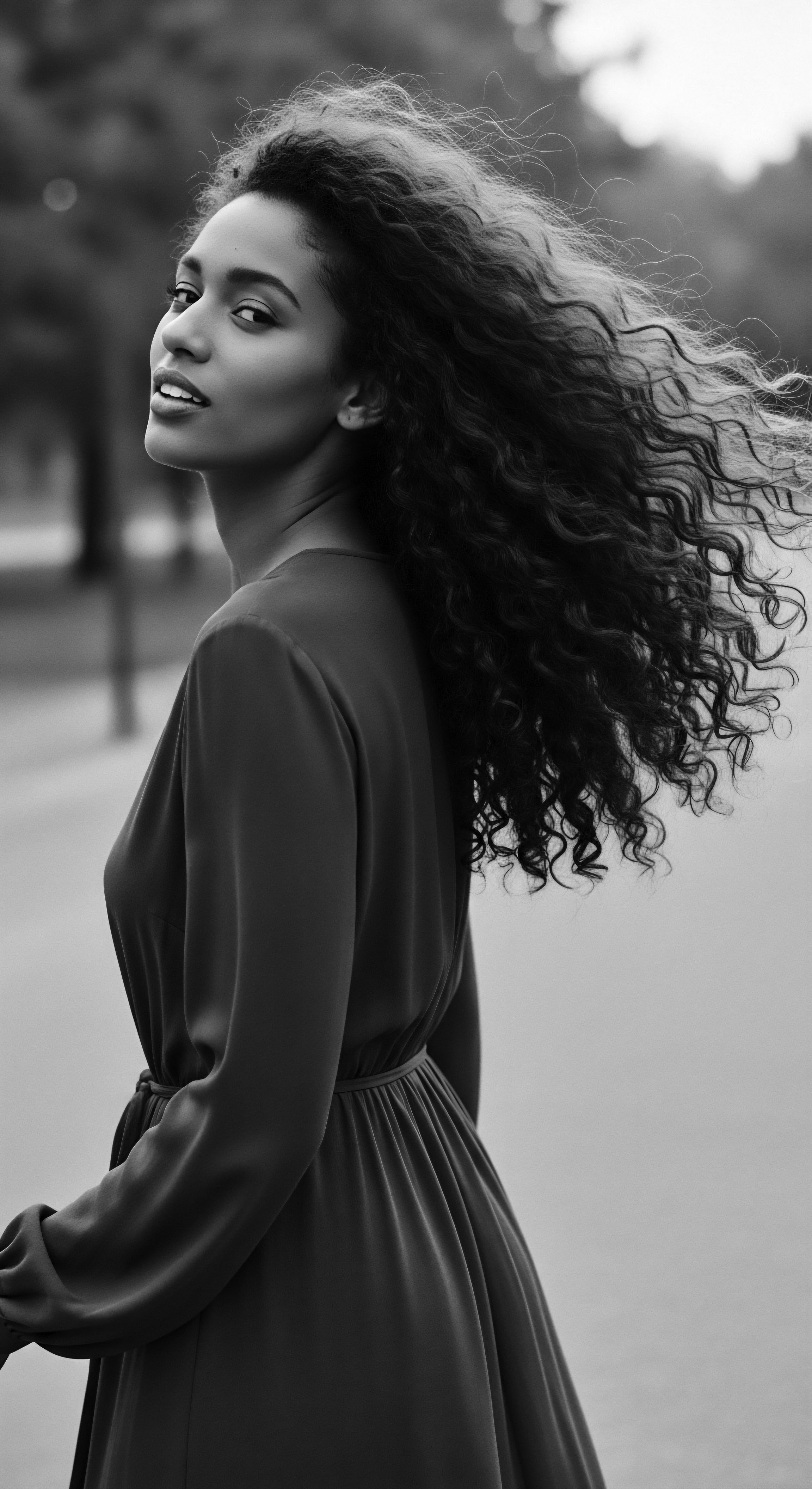
Tools of the Ancestors
The tools used in early hair care were extensions of their natural environment and their understanding of hair’s biological needs. Combs carved from wood or bone, often with widely spaced teeth, were designed to gently navigate the tightly coiled strands without causing undue breakage. These tools were not merely functional; they were often adorned, symbolizing the cultural significance of hair care.
The act of detangling, a necessary biological step for textured hair, was a patient, deliberate process, often performed with fingers or these specialized combs, minimizing mechanical damage to the cuticle. This understanding of hair’s fragility and the need for gentle handling was a direct response to its biological characteristics.
Traditional styling was a science of preservation, where practices like braiding and coiling served as vital shields against biological vulnerability and environmental wear.
Consider the use of heated stones or rudimentary combs to temporarily straighten hair for ceremonial purposes in certain ancient cultures. While not a daily practice, the biological effects of heat on keratin were observed, likely through trial and error, to achieve desired temporary alterations. This early experimentation with heat, long before chemical relaxers, points to an understanding of how external factors could temporarily alter hair’s protein structure.
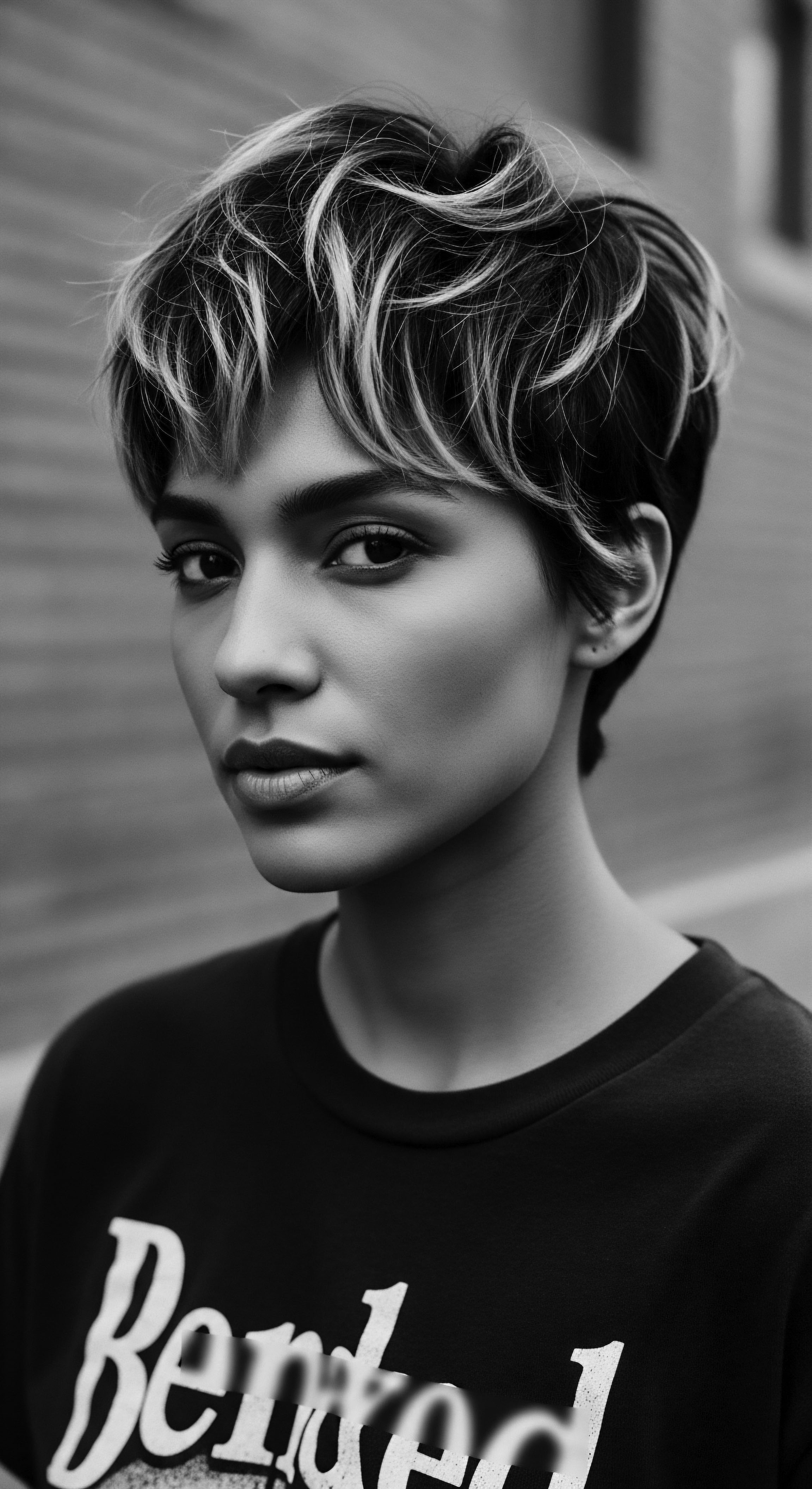
Relay
The ancestral knowledge, deeply rooted in the biological realities of textured hair, did not vanish with the passage of time. Instead, it was carried across oceans and generations, often adapting, always enduring. This transmission, this relay of wisdom, speaks to the immense resilience of our communities and the fundamental importance of hair as a marker of identity, spirit, and heritage. The biological imperatives understood by our distant ancestors continued to shape care methods, even as circumstances changed dramatically.
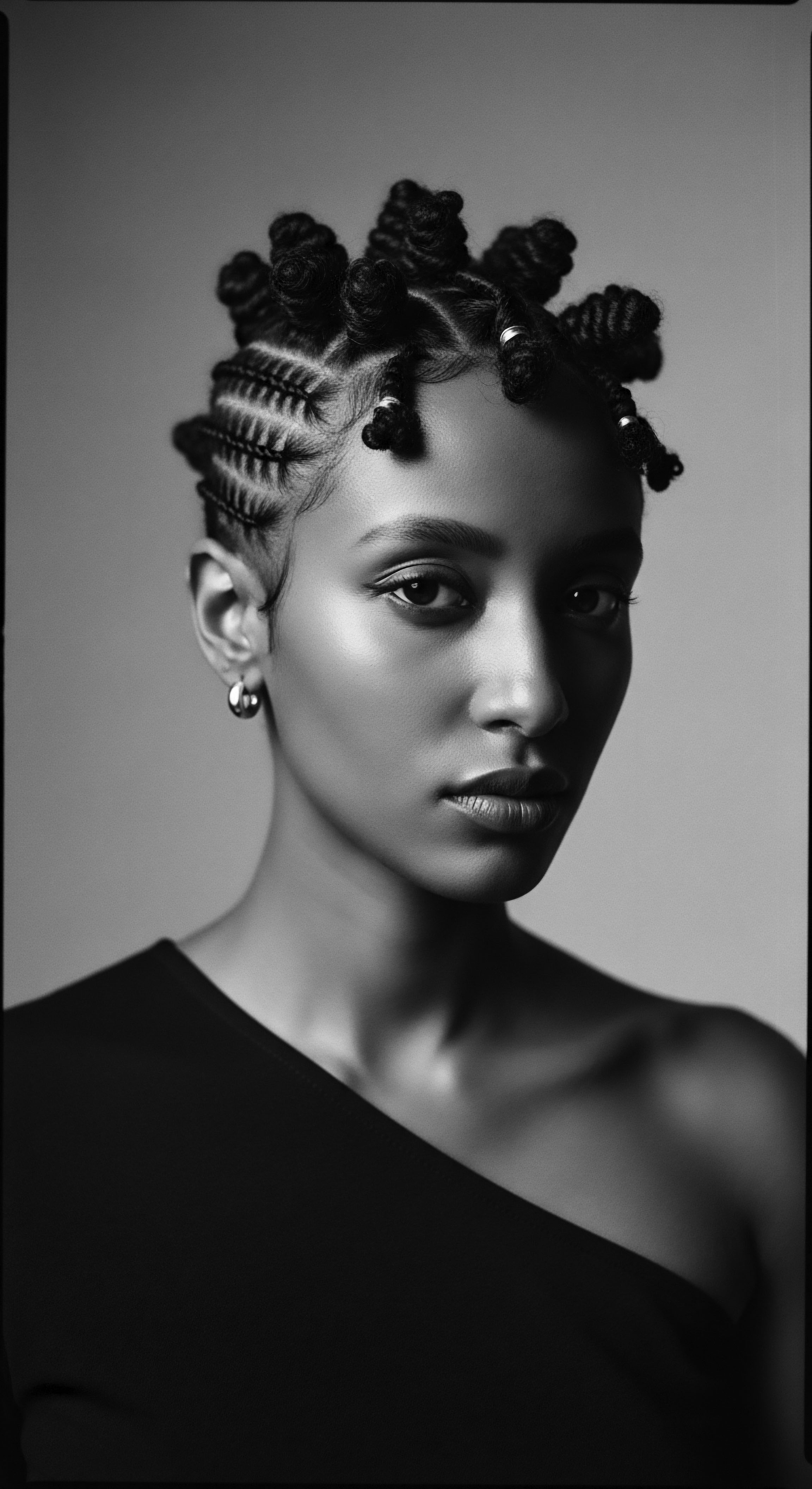
Nighttime Sanctuaries and Bonnet Wisdom
One of the most potent examples of this continuous relay of biological insight into care methods is the enduring practice of nighttime hair protection. The inherent dryness of textured hair, a biological reality stemming from its curl pattern hindering sebum distribution, made nightly moisture retention a necessity. Our ancestors, even without a modern understanding of trichology, understood that friction against coarse surfaces like bare sleeping mats or rough cloths could lead to significant moisture loss and breakage. This gave rise to practices that involved wrapping hair in soft cloths, leaves, or eventually, silk and satin.
These methods created a crucial barrier, minimizing friction and preserving the hair’s delicate moisture balance. The bonnet, in its many forms throughout history, became a symbol of care, a silent guardian of hair’s biological integrity through the night.
The legacy of this practice is particularly evident in the African diaspora. Enslaved Africans, stripped of many cultural markers, clung to hair care rituals, adapting available materials to protect their hair. The biological need remained, and the ingenuity in finding suitable covers—even simple head wraps—preserved hair health, a quiet act of resistance and self-preservation. This uninterrupted line from ancient practical wisdom to contemporary bonnet use underscores how deeply biological needs influenced the continuity of care across generations.

Ingredients of Heritage
The specific biological needs of textured hair also dictated the ingredients chosen for care across centuries. From indigenous plants to traded commodities, the focus remained on emollients, humectants, and natural cleansers. The very composition of these historical formulations speaks to a sophisticated, empirical understanding of hair biology.
Shea butter, for instance, a staple across West Africa, is rich in fatty acids and vitamins, making it an exceptional emollient that could combat the inherent dryness of highly coiled hair, providing a protective barrier against environmental aggressors. This practice was not random; it was a direct biological response.
Consider the research by Abayomi Fasina et al. (2020) on the traditional hair care practices among the Yoruba people of Southwestern Nigeria. Their study documented the continued use of ingredients like shea butter (ori), coconut oil (epo agbon), and various herbal extracts, noting their empirically observed benefits for hair strength, sheen, and scalp health. This practice, passed down through generations, directly addresses the biological propensity of textured hair for dryness and breakage, validating ancestral wisdom through modern scientific observation.
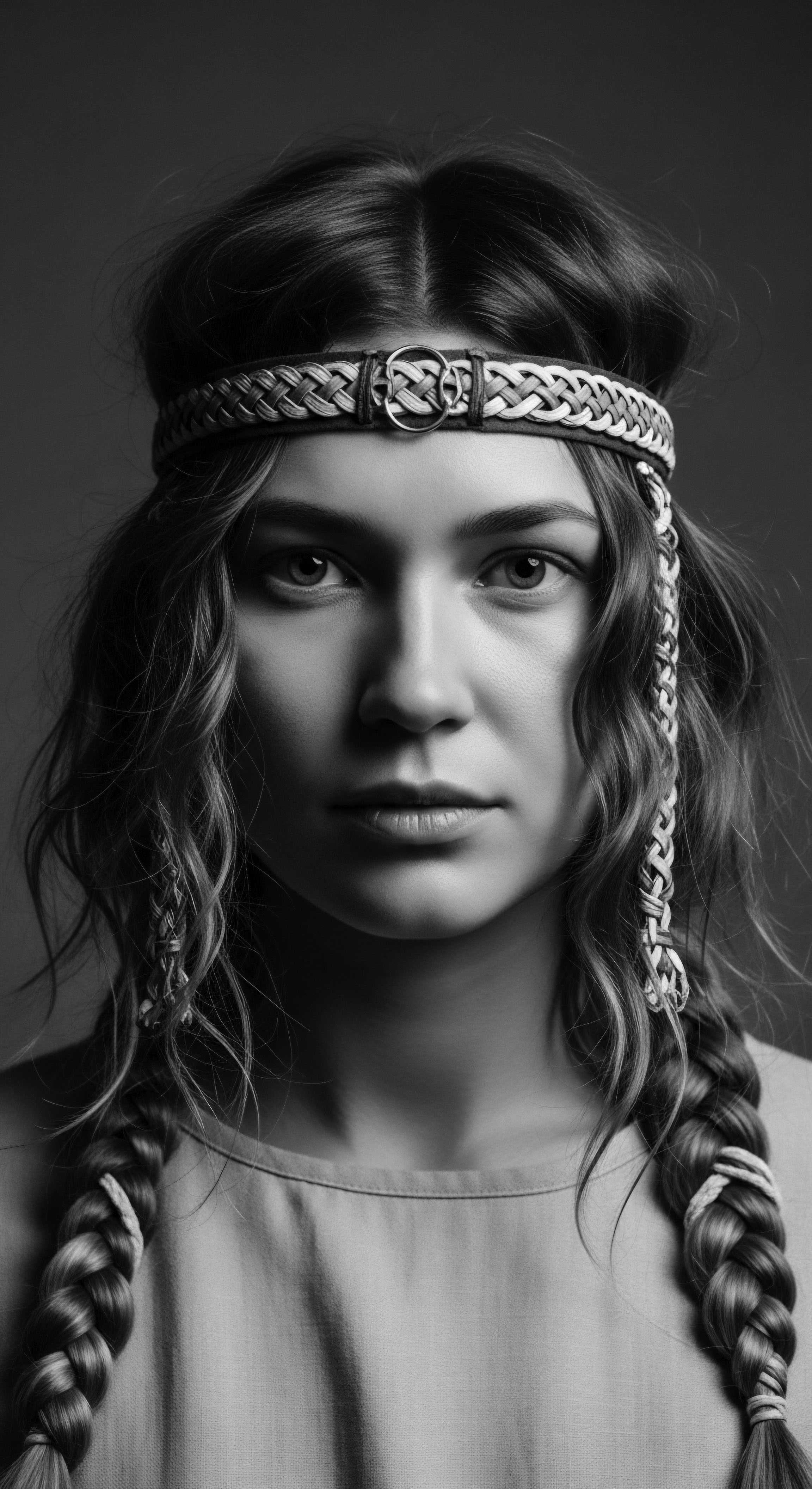
From Ancestral Solutions to Modern Challenges
The relay of these practices has not been without its complexities. The biological resilience of textured hair, even under duress, allowed its care traditions to persist. However, the imposition of colonial beauty standards, often favoring straightened hair, led to a period where the innate biology of textured hair was misunderstood or even denigrated. Yet, even during times of chemical straightening and intense heat application, the biological need for moisture and protection remained.
Covert practices, often carried out in homes, continued to apply nourishing oils and gentle detangling methods, maintaining a quiet thread of ancestral wisdom. The natural hair movement of recent decades marks a powerful return to honoring hair’s biological heritage, often resurrecting and reinterpreting these age-old methods with a contemporary scientific lens.
The enduring practice of nighttime hair protection, particularly through bonnets and head wraps, exemplifies the persistent relay of ancestral wisdom rooted in textured hair’s biological needs.
The historical understanding of hair loss, for instance, also informed care. When faced with biological challenges like alopecia, early communities did not have dermatological clinics. Instead, they relied on herbal remedies, specific scalp massages to stimulate blood flow, and protective styling that avoided tension. These methods, born from observation and passed down, were early attempts at addressing hair biology gone awry, speaking to a holistic view of health where hair was an indicator of overall wellbeing.
The ongoing dialogue between ancestral wisdom and contemporary science reveals a fascinating interplay. Modern trichology can now explain why shea butter works so effectively on textured hair (its lipid profile), or why silk bonnets are beneficial (reduced friction coefficient). But the practice itself, the intuitive understanding of the biological need, came from generations of keen observation and adaptation, a testament to the profound biological literacy that existed long before microscopes and chemical analyses.
- Shea Butter (Ori) ❉ A cornerstone across many African cultures, recognized for its exceptional emollient properties, directly countering the biological dryness common in textured hair.
- Coconut Oil (Epo Agbon) ❉ Valued for its ability to penetrate the hair shaft, providing moisture and reducing protein loss, a vital biological need for strong hair.
- Plant-Based Mucilage ❉ Substances like aloe vera, okra, or flaxseed gel, used to define curls and provide slip for detangling, working with the hair’s natural coiling biology.

Reflection
To truly grasp the enduring influence of early human hair biology on our care methods is to touch the very ‘Soul of a Strand.’ Our hair, in its myriad textures and forms, is more than just a crown; it is a living manuscript, continually written by the interplay of genetic inheritance, environmental adaptation, and the profound wisdom passed down through generations. The journey from observing hair’s biological intricacies—its propensity for dryness, its unique curl patterns, its vulnerability to stress—to developing intricate rituals of care, nourishment, and adornment is a testament to ancestral ingenuity. These practices, born of necessity and shaped by a deep reverence for the self, became threads in the grand textile of our shared heritage.
As we tend to our textured hair today, whether with ancient botanical extracts or modern scientific formulations, we are not merely performing a routine; we are participating in an unbroken lineage, honoring the enduring knowledge that flows from the roots of our being to the vibrant tips of every glorious coil. We are keepers of a living library, where every twist and turn reminds us of where we come from, and the resilient beauty that continues to unfold.

References
- Fasina, Abayomi, Aanuoluwapo E. Ajayi, and Olutayo A. Odunayo. “Traditional Hair Care Practices Among Yoruba People of Southwestern Nigeria.” Journal of Ethnobiology and Ethnomedicine, vol. 16, no. 1, 2020.
- Byrd, Ayana D. and Lori L. Tharps. Hair Story ❉ Untangling the Roots of Black Hair in America. St. Martin’s Griffin, 2014.
- Mercer, Kobena. “Black Hair/Style Politics.” Welcome to the Jungle ❉ New Positions in Black Cultural Studies, Routledge, 1994.
- Banks, Ingrid. Hair ❉ A Cultural History of Hair Fashion, Dress and Adornment. Berg, 2005.
- Nelson, Laura J. Black Hair ❉ Art, Culture, History. Yale University Press, 2020.
- Ross, Elizabeth. The Hair Bible ❉ A Complete Guide to Healthy Hair. Chronicle Books, 2017.
